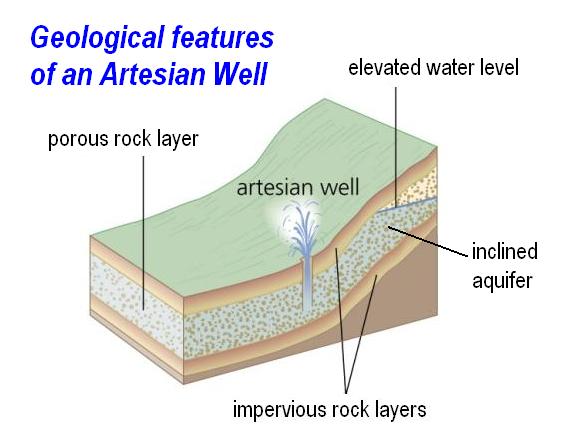Artesian Waters
Getting water out of the ground requires working against gravity and pumping the water up. But in some wells the groundwater will move upward of its own accord in apparent defiance of gravity.
Artesian wells are usually thought of as wells whose groundwater is free flowing at the land surface. It flows without the aid of a pump or other artificial means.
However, there are many other natural systems that can result in such wells. The classic concept of artesian flow involves a basin with a water-intake area above the level of groundwater discharge. These systems can include stabilized sand dunes; fractured zones along bedrock faults; horizontally layered rock formations; and the intermixing of permeable and impermeable materials along glacial margins.

Artesian wells were used by ancient Egyptians, and the word artesian comes from the French province of Artois, where the first European artesian well was constructed in 1126.
The energy per unit weight of groundwater is known as hydraulic head and consists of two main components, elevation head and pressure head. Elevation head is the potential energy per unit weight due to the elevation of the groundwater, whereas pressure head is the energy per unit weight arising as water flows downward and is compressed by the weight of the overlying water. The hydraulic head of artesian groundwater must be equal to or greater than the elevation of the ground surface to which it is flowing.
To log this earthcache, please measure (then email) the width (from bank to bank), in line with the tree and the Salt Creek, at it’s widest point.
Also, tell me why you think the rocks are the color that they are.
Thanks to BookRag and USGS for the information.